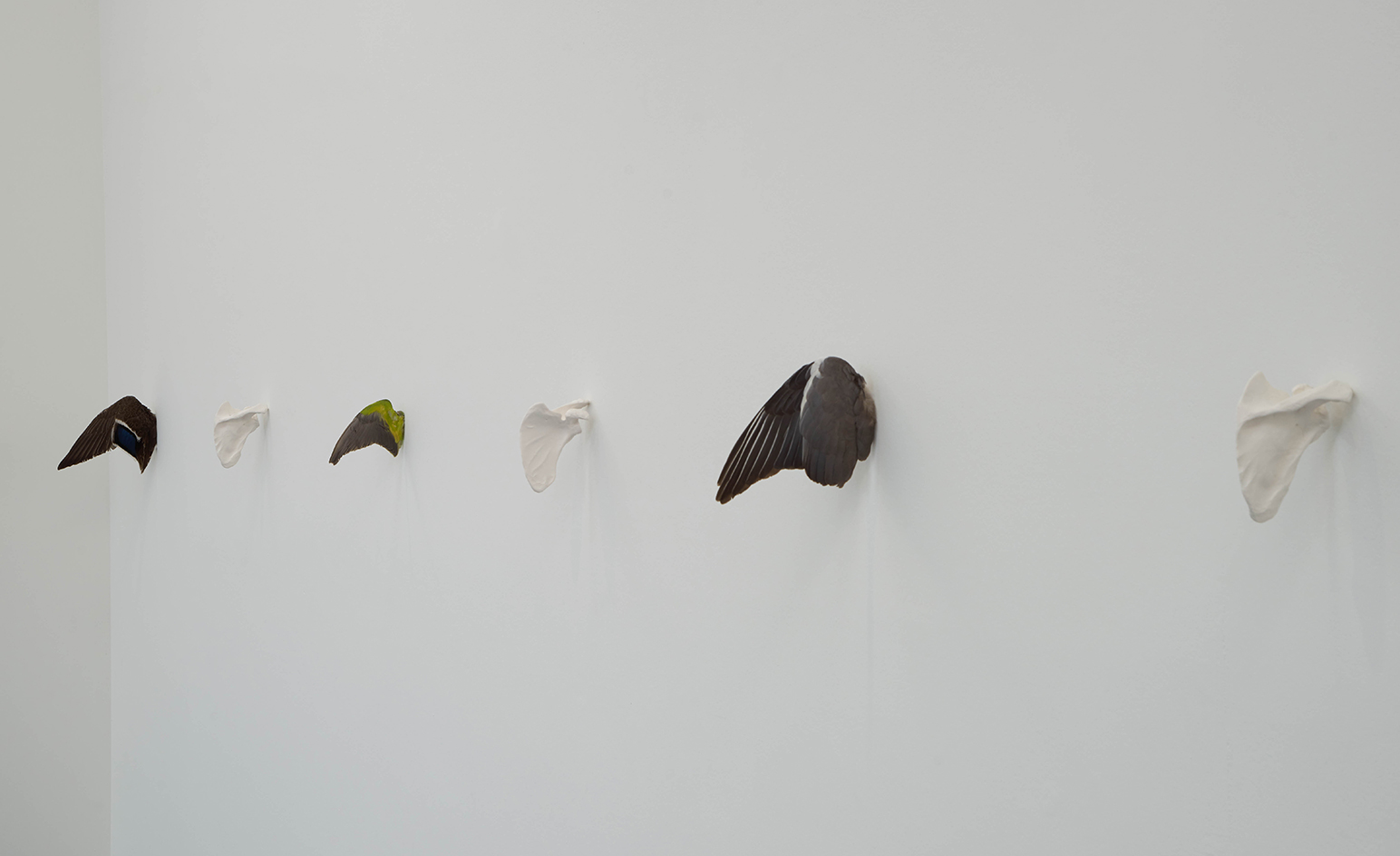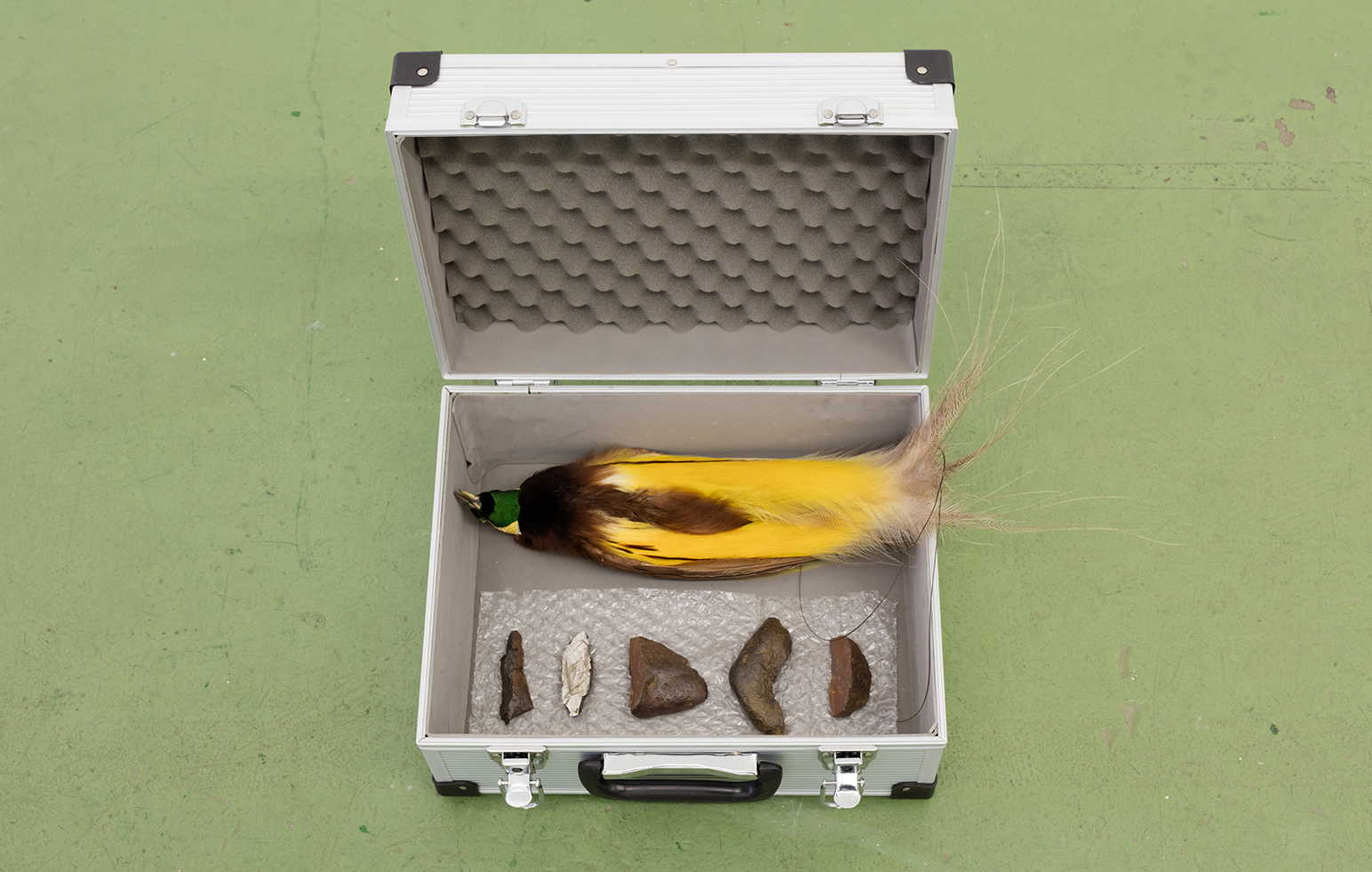Berlin-based artist Zac Langdon-Pole’s BMW Art Journey takes flight

‘My interest in celestial mapping is as a kind of ground zero of meaning-making and storytelling’, starts Zac Langdon-Pole. ‘Connecting the stars and making constellations out of them often tie to origin stories. In this sense, the journey will look at a plurality of origins, and how they do, or do not, relate,’ explains the winner of the next BMW Art Journey, the annual project which sees the Munich car company alongside Art Basel support international emerging artists.
Langdon-Pole was chosen from a shortlist of three other artists who displayed work in the ‘discoveries’ section at Art Basel Hong Kong earlier this year. He calls his BMW Art Journey installation project ‘Sutures of the Sky’. The New Zealand-born and Berlin-based artist is interested by how migratory routes of birds have been used by Polynesian pathfinders to map their way across seas. He will attempt to follow the flight path of birds – white stork and arctic tern – travelling along the earth’s axis through Central Europe – from London to The Netherlands and France, before returning to Berlin in early January. In the new year, Langdon-Pole will resume the journey making his way through the Pacific Islands of Samoa and Hawaii, ending his research in New Zealand where he says he will consolidate his work.

‘Passport’, 2018, by Zac Langdon-Pole
We are meeting on his first stop in mid-December in London. Langdon-Pole has mentioned that he would like his understanding of how cultures intersect with the science of celestial mapping flow into larger existential inquiries about who we are, and our role in the world. He explains, ‘maps of the stars underpin and structure the way we live. For instance, the differences between ‘clock time’ (rational, abstract and externally ordered time) and ‘event time’ (based more on environmental happenings and relationships) will also be explored.’ Looking at how these mappings of the stars have transformed in the course of colonisation and globalisation, I hope will be a useful way of reflecting where we have come from and where we are heading in an increasingly globalised world.’
The beauty of the BMW Art Journeys initiative, established three years ago, is exactly this: the creatives are encouraged to let the experience organically mould the artwork. Last year’s winner, American artist Jamal Cyrus travelled from the US to Europe, Africa and Latin America, tracing the migration of slaves to assess their cultural impact along their journey.
In the previous year, the British artist Abigail Reynolds took on lost libraries along the Silk Road. Hers was a search for closed, destroyed or simply missing libraries with her travels documented in a book of scrap-notes, words and image that naturally tell a compelling and intimate story of war, displacement, lost languages and lost lands.

Installation view of Zac Langdon-Pole at ‘Ars-Viva-2018', in Ghent Photography
Langdon-Pole’s journey shares elements of archaeology and ethnography. It is about delving deep into museums archives and ancient library books as well as exploring places and people now. In Europe, the focus is on the formation of star mapping systems, particularly how Europeans have imagined and subsequently mapped the southern hemisphere’s skies from the 16th to the 18th centuries.
‘The constellations many of us know from Europe became a kind of “universal” blueprint that through imperial expansion and colonisation has been transposed on top of, and obfuscated indigenous perspectives from the South Pacific,’ he says. ‘The overall course of the journey in this sense charts a meeting of worlds between Europe and the South Pacific.’

‘Residuals (a)’, 2018, by Zac Langdon-Pole 2018, aluminium tool case, Greater Bird of Paradise taxidermy re-prepared with legs removed, two o-cut pieces of Muonionalusta meteorite (ne octahedrite, from Sweden), three o-cut pieces of Nantan meteorite (coarse octahedrite, from Peoples Republic of China)
This leg of the journey takes on a very different form. Langdon-Pole sounds excited about what he may discover in the Pacific Islands. He will look at indigenous knowledge of the stars and how the data has been recouped and translated in the wake of European colonisation. The artist offers this in explanation: ‘Whereas the European research will view how cultures have been represented through collections and museums, in the islands I will be engaging directly with people, with the aim of forming more collaborative connections.’ In Hawaii and the Marshall Islands, he has arranged meetings with a range of experts – from academics to sailors to local artists.
Langdon-Pole is quick to acknowledge his skills are as an artist, not an archaeologist or ethnographer. ‘There is always a particular emphasis for me on exactly how material and information are woven together to make an artwork,’ he says of how he sees the body of research developing. ‘I will be documenting as much as I can through writing, photography and filming, field recordings and interviews with people within each location during my travels.’
Langdon-Pole expects there to be a great deal of material to process and continue to use after this project is finished. ‘While I am currently working toward a presentation in Art Basel next year as a specific outcome of the BMW Journey, I imagine that this experience, with the research undertaken and the connections made, will also inform my work over a much greater timeframe to come.’
INFORMATION
Receive our daily digest of inspiration, escapism and design stories from around the world direct to your inbox.
The BMW Art Journey by Langdon-Pole will be on exhibition at Art Basel in June 2019. For more information visit the Michael Lett website and the BMW Art Journey website
A writer and editor based in London, Nargess contributes to various international publications on all aspects of culture. She is editorial director on Voices, a US publication on wine, and has authored a few lifestyle books, including The Life Negroni.
-
 Modern masters: the ultimate guide to Keith Haring
Modern masters: the ultimate guide to Keith HaringKeith Haring's bold visual identity brought visibility to the marginalised
-
 Discover a hidden culinary gem in Melbourne
Discover a hidden culinary gem in MelbourneTucked away in a central Melbourne park, wunderkind chef Hugh Allen’s first solo restaurant, Yiaga, takes diners on a journey of discovery
-
 Nina Christen is the designer behind fashion’s favourite – and most playful – shoes
Nina Christen is the designer behind fashion’s favourite – and most playful – shoesShe’s created viral shoes for Loewe and Dior. Now, the Swiss designer is striking out with her own label, Christen
-
 All the new electric cars and concepts revealed at Munich’s IAA Mobility 2025
All the new electric cars and concepts revealed at Munich’s IAA Mobility 2025Munich’s alternative motorshow is now in its third iteration, combining a traditional exhibition space with a conference and large-scale public activations on the streets of the city
-
 BMW celebrates half a century of its pioneering Art Car project with exhibitions and more
BMW celebrates half a century of its pioneering Art Car project with exhibitions and moreWe present a portfolio of the artists who have contributed to 50 years of BMW Art Cars, including Andy Warhol, John Baldessari, Jenny Holzer and David Hockney
-
 Peruse the new BMW Group Archive to explore the evolution of BMW design over the decades
Peruse the new BMW Group Archive to explore the evolution of BMW design over the decadesFor lovers of the marque, BMW’s commitment to online archiving is second to none. The latest website from the Bavarian manufacturer is this extensive visual catalogue of 80 years’ worth of BMW design
-
 The top 10 concept cars of 2024, as selected by Wallpaper’s Transport Editor
The top 10 concept cars of 2024, as selected by Wallpaper’s Transport EditorWe round up our favourite forays into futuristic design with this collection of concepts and design studies showcasing the transport of tomorrow
-
 New BMW i5 Touring is an all-electric tech powerhouse that brings the noise
New BMW i5 Touring is an all-electric tech powerhouse that brings the noiseBMW has thrown its considerable expertise into making the i5 eDrive40 M Sport Pro Touring the ultimate zero-emission all-rounder. Jonathan Bell tries it out
-
 BMW’s limited-edition Skytop roadster draws on the past. Could it also predict the future?
BMW’s limited-edition Skytop roadster draws on the past. Could it also predict the future?Just 50 examples of the BMW Skytop are being built, and they’ve all been spoken for. We examine whether this classically styled machine is a harbinger of aesthetic change
-
 The 2024 Goodwood Festival of Speed hosted a wealth of auto innovation, from hypercars to hot hatches
The 2024 Goodwood Festival of Speed hosted a wealth of auto innovation, from hypercars to hot hatchesThe best new SUVs, EVs, hatchbacks and supercars to emerge from the 2024 Goodwood Festival of Speed
-
 The Concept Mercedes-AMG PureSpeed and BMW Concept Skytop offer drop-top dreams
The Concept Mercedes-AMG PureSpeed and BMW Concept Skytop offer drop-top dreamsBMW and Mercedes-AMG open up with two new convertible concepts, one pitched at performance, the other at the spirit of the good life